Harmonized Landsat Sentinel-2 (HLS)
10 June 2025 5:53pm
Improving the performance of the pippyg static bat detector with a remote microphone
4 October 2024 11:19am
10 October 2024 3:35pm
Here is the final, dramatic word. I built a pipistrelle (noisier than a pippyg so a good test) and used non-ceramic capacitors and played with ferrites and 1R resistors.
Attached are new vs old sonograms, and it's a remarkable improvement. The visual difference is stark, and there is a measured 5dB improvement in the "silence" between Noctule calls. Thanks to everyone who commented on this, this problem was entirely about ceramic capacitors. I have no doubt SD cards do generate ultrasound, but in this case it was being dwarfed by the ultrasound generated by the capacitors.
Circuit changes shown below - 3x 22uF ceramics removed, 2x 22uF ceramics replaced by 47uF poly/tant, 5x 100nF ceramics replaced by 100nF NP0/C0Gs, 1 ferrite swapped for a 1R - this one may be pointless!
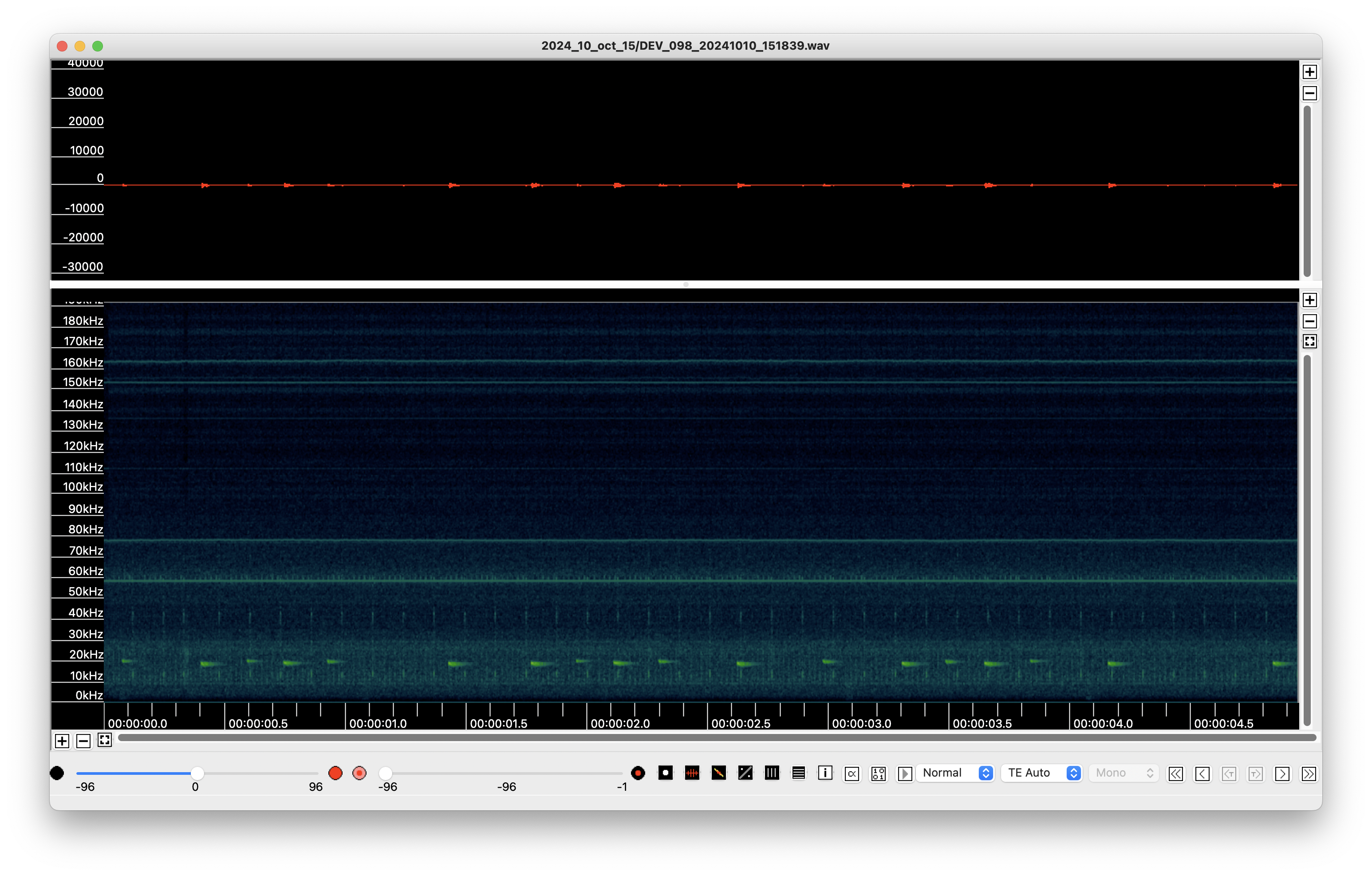
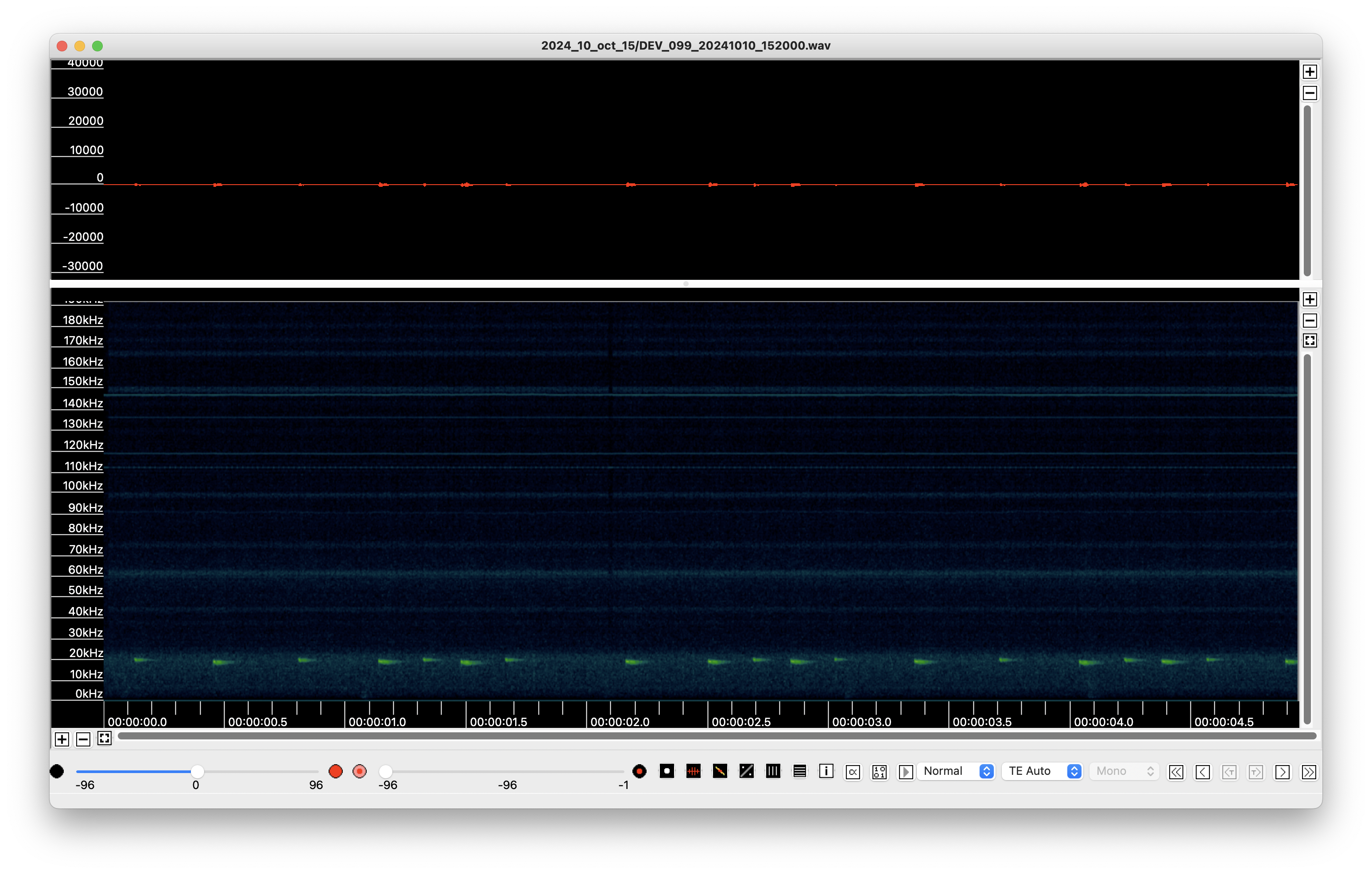
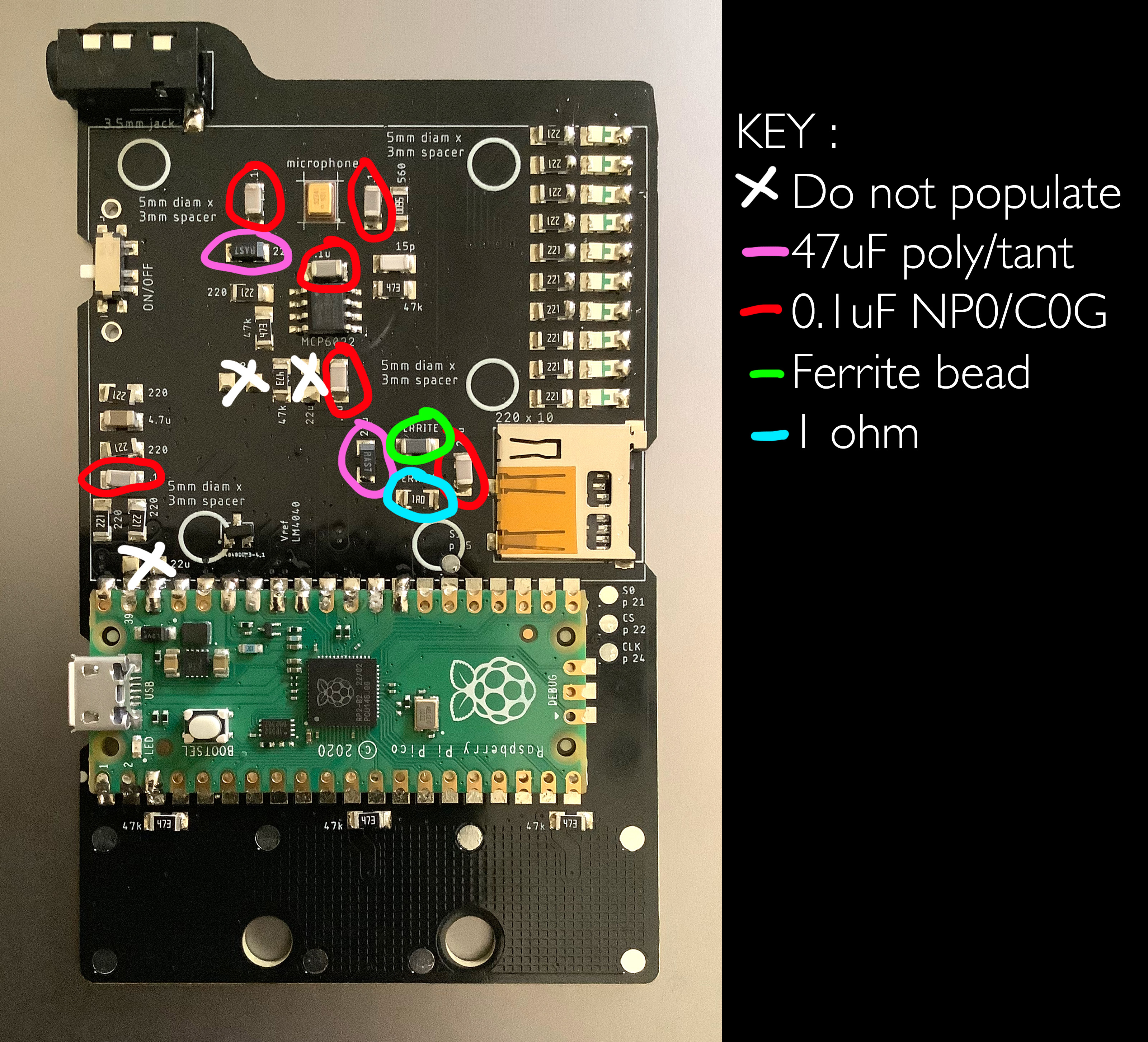
10 June 2025 2:15pm
@PhilAtkin Really excited to PippyG available for public. Can't wait to get my hands on these little babies soon.
Apodemus PippyG | NHBS Wildlife Survey & Monitoring
Buy Apodemus PippyG: NHBS
Non-Invasive Turtle Nest Monitoring Using RTI Technology
29 May 2025 1:12pm
29 May 2025 1:18pm
6 June 2025 9:40am
We are pleased to welcome a new team member, Dr Hafiz Fazalul Rahiman from Universiti Malaysia Perlis (Unimap) to the team!
https://scholar.google.com.my/citations?user=i2f7Dz0AAAAJ&hl=en
@hafizfr .
We'll be posting our lab work soon.
9 June 2025 6:51pm
Hello, could you please elaborate on what the purpose of this project is? Thanks a lot :)
Lukas
Cellular Camera Traps in Europe
6 March 2025 12:17pm
10 March 2025 3:46am
We manufacture the DOC AI Cam. It's a thermal camera, so particularly good for nocturnal animals. It comes with a 4G modem. It might meet your needs?
Suggestions for finding event funding (for GOSH)?
9 June 2025 11:47am
Feedback New Tech - tracking aquatic biodiversity in offshore windfarms
7 June 2025 2:47pm
Implanted biologgers with remote data access
6 February 2025 10:57am
6 February 2025 6:33pm
Hi @Ebennitt, we do have a working solution that works with all our OpenCollar devices. We connect to sub skin implants and then send and store those readings using Bluetooth, LoRaWAN and/or Iridium satellite. We can have a quick online meeting if you like to show this. Works great!
5 June 2025 8:58pm
Hi @Ebennitt ,
I have a similar interest for the use of implantable heart rate loggers with remote data access capabilities. Have you found any solutions?
Thanks,
Courtney
6 June 2025 1:25pm
Hi Courtney
Nothing off-the-shelf. A colleague is talking to e-obs about developing this capability but I don't think it's there yet.
There are some Bluetooth-transmitting body temperature loggers being used in South Africa, I think they are through LoggerMate. However, this means getting close to the device with a BT receiver, not transmission to collar.
So in short, nothing concrete as of now I'm afraid.
All the best
Emily
Free webinar: The Road Towards Predicting Sturgeon Migration
6 June 2025 1:14pm
Any experience using camera traps for wading bird presence?
5 June 2025 8:04pm
R as a Mini GIS: Build Interactive Maps from Scratch
5 June 2025 4:47pm
Interactive Data Visualizations in R: Create Your First Shiny App
5 June 2025 4:42pm
Artificial Intelligence Meets Biodiversity Science: Mining Museum Labels
5 June 2025 4:37pm
Animal Sound Archive Webinar
5 June 2025 2:56pm
Convocatoria abierta para liderar el grupo LATAM de WILDLABS
 Vanesa Reyes
and 1 more
Vanesa Reyes
and 1 more
4 June 2025 4:51pm
WILDLABS Conservation Tech Meetup, Cambridge Summer 2025
4 June 2025 1:14pm
Business Intelligence Analyst
3 June 2025 10:07am
WILDLABS AWARDS 2025 - Trapper Keeper - a scalable and energy-efficient open-source camera trap data infrastructure
30 May 2025 12:05pm
2 June 2025 10:24pm
Conservation AI Internship (paid) at Conservation International
2 June 2025 4:01pm
Help needed : Overview of Image Analysis and Visualization from Camera Traps
2 June 2025 1:59pm
2 June 2025 2:17pm
This camera trap survey addresses the crucial need for a unified and comprehensive solution to improve data reliability and standardize monitoring techniques in wildlife research. Well done !
2 June 2025 3:18pm
This survey on camera trap use is a valuable effort to improve data quality and consistency in wildlife monitoring. Looking forward to the results and how they will help shape best practices and future research. Great initiative!
Convocatoria abierta: MAR+Invest 2025 - Aceleración para soluciones de conservación de arrecifes
2 June 2025 1:13pm
Advice needed for accessible acoustic monitoring
15 May 2025 10:50am
20 May 2025 6:51pm
Hi Nev, from a high level, have you considered acoustic indices and the biodiversity index?
21 May 2025 2:50pm
Hi Mona. Yes, this is what we certainly what we are considering, but how to measure these indices by the hands of non-experts in the field is the advice that I need from the WL network. Cheers
2 June 2025 10:21am
Nev - hi, I'm UK based too and happy to set up a call if I can help?
All the best, Carlos
Internship advice
26 May 2025 11:11am
29 May 2025 10:47am
Hi Jody,
Thanks for posting this question. Here are a couple of recommendations and ideas:
- Pay. They should be paying you, not the other way around. I wouldn't recommend any internship that requires a fee to participate. You possess highly relevant and valuable technical skills, and organizations or businesses should compensate you accordingly, even as a student. I suggest looking elsewhere for organizations that need talented individuals to help solve problems for them.
- Sources. Jobsingis has been listing internships lately, as have several UN agencies on UN jobs. Go to https://www.jobingis.com. You could also ask folks directly here or on other listservs such as SCGIS. LinkedIn would be another place to search for or ask about potential internships.
Happy to repost anything on Linkedin for you and good luck!
Vance
29 May 2025 10:48am
p.s. https://environmentjob.co.uk/jobs has internships searchable for any location, not just UK.
AI/ML opportunities
14 April 2025 4:47am
19 April 2025 2:08am
Ritika,
All the best! I hope someone provides a more substantive answer!
I have also graduated with masters in AI and ML recently. Difference being I am at the end of my IT career. I am looking for a career switch to biodiversity, wildlife conservation, sustainability or climate change.
I am trying to do my best to do modern job search. Just warming up to it. LinkedIn, posting relevant posts, being consistent. Virtual networking. In person networking. Being a soon to be fresh graduate, you have access to a huge student networking and academic circle. Keep hitting them consistently and I am sure you will find something.
Share the good news when it happens. :)
LoRa-GPS for small mammals
2 June 2025 6:04am
Need advice for running BirdNET on big data
11 May 2025 12:14pm
19 May 2025 12:22am
Would that be able to process locally stored acoustic data?
One of the great things about birdnet analyzer is that it is local - it doesn't require uploading terabytes of data into the cloud, which would be expensive, take forever, and likely have some transfer errors in areas with poor internet connection (like the tropics where I do my research).
30 May 2025 2:59pm
Hi Hubert, I think the key will be to ensure the model is making use of your GPU. In general, BirdNET should theoretically support GPU usage but I have never been able to get it working. You can use a tool such as nvidia-smi to ensure that the GPU is being used.
My recommendation (as the developer behind the bioacoustics model zoo) would be to use WSL 2 (windows subsystem for linux) and use one of the alternatives to BirdNET available in the the bioacoustics model zoo (Perch, BirdSet EfficientNet, BirdSet ConvNext, HawkEars). All of these alternatives provide GPU support. The also might work perfectly fine on Windows without WSL, but you're more likely to encounter issues.
GitHub - kitzeslab/bioacoustics-model-zoo: Pre-trained models for bioacoustic classification tasks
Pre-trained models for bioacoustic classification tasks - kitzeslab/bioacoustics-model-zoo
this will require a bit of python environment set up and coding, but WSL + python + bioacoustics model zoo will ensure you can use your GPU to speed up inference. At a high level, you would need to
(1) install WSL if you don't have it yet
(2) in WSL, install miniconda and create a conda environment
(3) install the bioacoustics model zoo in the conda environment
(4) run a python script using a model zoo model .predict(audio_files) function. You'll want to use a large batch_size eg 256 and probably num_workers=4 or so if you have multiple CPU cores to use
See docs in the link below and at opensoundscape.org for details, and feel free to reach out if you need help
Cheers,
Sam
GitHub - kitzeslab/bioacoustics-model-zoo: Pre-trained models for bioacoustic classification tasks
Pre-trained models for bioacoustic classification tasks - kitzeslab/bioacoustics-model-zoo
31 May 2025 6:40pm
Thank you for the response, I'll look into it.
Apply for Free Access to Nature FIRST Conference (innovative solutions for biodiversity monitoring and human-wildlife coexistence)
22 May 2025 2:37pm
28 May 2025 4:20pm
Nice!
Thought I'd mention that Wildlife Security Innovations will have a booth there, demonstrating our new multi-camera, local AI camera trap that supports miniature high resolution thermal modules. I will be bringing these along.
31 May 2025 4:21pm
Hi
This is great!
So just to double check - there is no way to join online? I would love to be part of this conference.
Thanks, Els van Lavieren
Evaluation of Global Forest Watch
17 March 2025 4:51pm
9 April 2025 8:05pm
Hi @iainmcnicol , welcome to WILDLABS! Thanks for posting this on here. I have shared with my colleagues at Fauna & Flora who have some experience (especially with the deforestation alerts) and could maybe provide feedback as well. We also have a page on 'The Inventory' where we're asking people to review various data products, tools, platforms etc including one for Global Forest Watch. As you can see not many reviews currently so it would be great (if possible by anonymising responses etc.) to get the information from your survey and translate this into something we could add to 'The Inventory' for the wider community. Let me know your thoughts on this!
Also is there a closing date for the survey?
AfriMove
6 March 2025 8:09am
A crazy new feature on eBird - Uploading media at the list level
23 May 2025 10:26am
27 May 2025 7:50am
Thanks for the heads up, Adrien. I've put my birdwatching on hold but will reboot it again this summer and start using eBird.
30 May 2025 3:17pm
My first thought was that these were bird photos and eBird would automatically populate your checklist, but now I see these are habitat photos! That is very cool ... eBiome! From the website:
Habitat photos hold tremendous promise for improving bird occurrence models and understanding long-term changes to habitat conditions. We encourage users to document habitats during their visits and continue tracking changes over time. Tagging observed species in habitat photos may help reveal important connections between birds and their environments. These can also offer finer-scale insights that improve our approaches to assessing habitats, which currently relies on satellite imagery.
Soundscape recordings hold similar promise, capturing the broader soundscape of a site and how it may change. They will also play a key role in training Merlin Sound ID to recognize individual species within busy dawn choruses and environmental recordings.









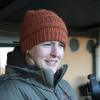
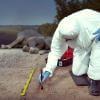





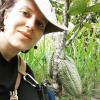






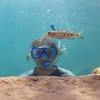


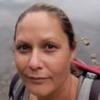

7 October 2024 11:19am
All inputs gratefully received and acknowledged! There will be experimentation with ferrite and resistor combinations when I get my components in.
The circuit on shipping PCBs has a 220 ohm resistor on the mic and op amp to operate as a low-pass filter to suppress high frequency supply noise. The current to the op amp and mic together are low enough that the 3.3v input drops to around 3.2v beyond the filter, definitely good for both op-amp and microphone. The combination of 44uF and 220ohms should put the 3dB point at 17Hz, so the filtering effect at even 17kHz - 10 octaves above that - is 60dB. The supply to the analog circuit should be very stable and quiet at the frequencies we care about, 20kHz and beyond, which is why the clicking noises with high frequency components was so annoying - it's clearly acoustic, no electrical in origin, it's pretty clear after all the comments on here that, even though SD cards do seem to generate ultrasound, the ceramic capacitors I've been using are the bigger culprit, so I need to address that and report back with an update to this post.
This has all been, and continues to be, EXTREMELY interesting and educational, and will ultimately lead to big improvements in what is already a great, affordable recorder.